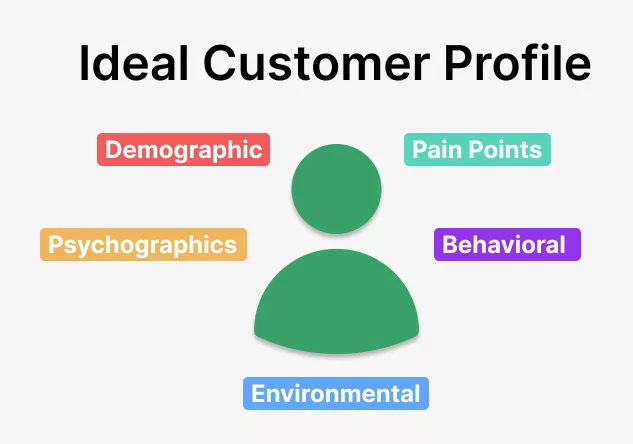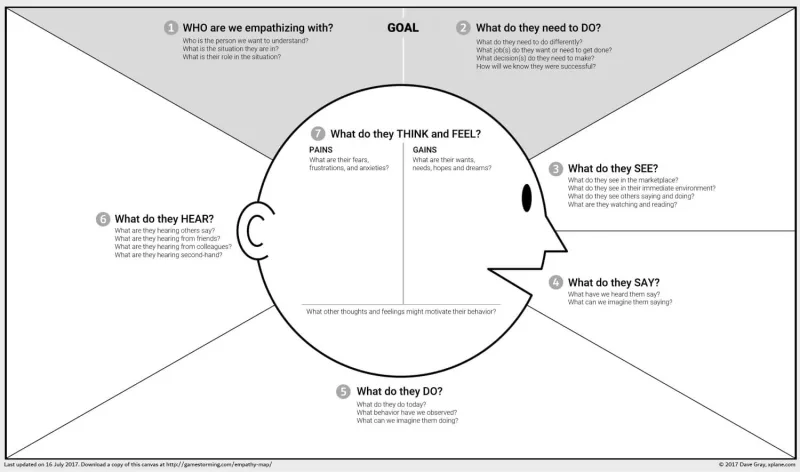You decide to join entrepreneurship journey with Shopify, picked a great name, launched your store with great products.
Started a few campaigns on Google or Meta and waiting your orders.
Waiting new orders for days, weeks or maybe months.
Now you’re thinking what’s wrong?
The simple answer: You can’t sell without having a well designed Shopify sales funnel.
In this guide, I’ll share;
- What is the sales funnels for Shopify?
- Key parts of a successful Shopify sales funnel
- How to create your Shopify sales funnel in four key steps with examples
- Best tools and apps to use in your sales funnel
- FAQs
What is the sales funnels for Shopify?
Getting new customer is the process of turning strangers to customers. There are some specific part of these journeys. Sales funnels are visual representation of this customers journeys starting from total strangers and ending with being customer.
Sales funnels help us to identify distinct areas of customer journey so visitors position in this journey can be identified and optimized to move visitors to the next stop in this journey.
Overview of Sales Funnels
There are a few different concept for the sales funnels. The most popular one is the AIDA framework.
AIDA Framework
AIDA framework stands for Attention, Interest, Decision, Action
Based on this framework there are four main stages of customers journey. Let’s take a look at each steps.
- Attention: Your customers first notice your brand and products.
- Interest: This is where thinking happens. Visitors find answer of “Should I buy this product from this brand?”
- Decision: This is the second thinking phase. Visitors find answer of “Should I buy this product right now?”
- Action: Last step of the sales funnel. Customers take action in this step and become a customer in this step.
As you can see first attention step is the top of the funnel. Interest and decision is the middle of the buying journey and action is the last step of the sales funnel.
How to Build Your Sales Funnel?
Building high-converting sales funnel has three main component.
1. Know Your Ideal Customer Profile
As I previously explained in the How to Grow Your Shopify Store guide, everyone can’t be your customers.
You need to find your niche that response your brands, products and value propositions better than anyone else. This is called ideal customer profile (ICP).

If you have at least 200-300 customers, the best way to create your ICP is directly talking with your customers. Just check your best customers (who are spending most or buying repeatedly from you) and get in touch directly with them. Ask open ended questions to get idea of what makes them your best customers.
If you’re just starting on your Shopify journey, then my recommendation is using Google Bard. Here are my prompts.
- “I have an online e-commerce business that selling … (give information about your products)”
- “My brand focus on …. (give information about your brand identity)”
- “Advantages of my products ….., Disadvantages of my products ….., Benefits of my products ….”
- “You’re a senior consultant with 20+ years of experience. You’re a master at creating the most unique and unusual growth strategies. You’ve helped the fastest-growing companies in the world skyrocket their growth and customer acquisition. Your tone of voice should be actionable, no-fluff, approachable, casual, and storyteller.”
- “Can you create detailed ideal customer profile for me?”
That’s it! Save Bard response to any document and do a quick brainstorming on the outputs. Check out my previous articles What is the Ideal Customer Profile and How to create your ICP? to learn more about it. You can see my example for a hypothetical store at the end of this post.
Empathy Map
Our main goal with sales funnels is convincing people to say “I want to buy this product, right now“. To reach that point we need to understand our customers. What are their desires? What makes them stop and think? What triggers them to act right away?
This is where empathy map joins the game.

Here are nine questions we need to answer about our ICP;
- What they see
- What they say
- What they think
- What they do
- What they feel
- Pain points
- Gains
- Concerns
- Desires
There is no 100% correct answer for all of these questions. Main idea is getting a general understanding of our customers. Best practice for this process is getting started with the help of AI and continue with a quick brainstorming session.
I explained each details at Empathy Map post. Check it out to learn more.
2. High Quality Content
“Content is king.” – Bill Gates
As Bill Gates pointed Content is king and it will be always!
Video, blog, visuals, podcasts, photos, emails, ad copy, infographics… Format doesn’t matter, we always consume content. Today everyone can create content but it’s quite rare to find helpful, high-quality content. When people find a content that really has a point of view, teach something or really enjoying they just get stick with it.
You need to create contents for each step of your sales funnel. Now let’s take a look at each step and content you should be using.
Attention Content
Did you heard lead magnet term before? It’s used for B2B sales funnel. When building your shopify sales funnel, you need to build your own customer magnet contents. In this stage of the funnel, we need to earn the attention of target audience.
Let’s say we have a Shopify stores that selling high-end, organic clothes for new borns. Our ICP will be new parents who care about chemical-free clothes and sensitive about environment and also afford high-end products. Store, products, brand looks perfect. Let’s design the first step of our sales funnel. We have two options.
- Following Common Advices: We can start with great visuals for advertisement, giving huge discounts and try to work with influencers. Our message will be like “our products cheaper, better, etc. then others”
- Focusing on Customers World: We can focus on our ICP and work on something different like “7 things you need to know before buying a clothes for your little ones”, “What scientific researches shows about the chemicals on baby clothes” etc.
We need to get attention, right? Giving 50% off, Influencer campaign or direct, real content marketing point to real customer concerns. If you don’t want to waste your money with never ever go with the first common expert advice.
Focus on your ICP, discover their pain points and concerns and offer them a content that educate them.
In our baby clothes example, instead of “my products are best for your baby health”, I prefer to first explain clothes affects on babies and common threads on the market.
Checklist for attention content
- Is it address the ICP pain points or concerns?
- Is it something interesting?
- Is it educative?
- Does it have a point?
When you create your content that passes all items in this checklist, you can now working on your content format.
It can be webinar, free ebook download page, long form blog content, YouTube video, email course… My approach is first creating the core content and creating multiple formats using the same core content.
Interest Content
Think your sales funnel like a movie. There are a huge story contains some certain sections. If it is well designed, there should be flow between these chapters. You shouldn’t be able to identify moving from one section to other section.
Previous stage of the funnel we get the interest of our potential customers with offering a solution to their pain points, concerns in an educative and interesting content. In other words we sell the problem. But it’s not enough, we also need to sell the solution, too.
So in this stage you can start mentioning about your brand and products.
If we need to continue our previous example, let’s say we created some contents like “7 things you need to know before buying clothes for your baby”. We get their attention and educate them about the high quality, organic clothes and its’ effect on the babies health.
Now in this stage we need to start talking about our brand and products. So our concept can be something like “how we designed 100% baby friendly clothes”. You need to show how your products better than competitors and give the answer of “why should I buy this product from this brand”.
Decision Content
This is the last step before completing the funnel. This is highly related with your business strategy.
Now our leads aware of the problem and the solution we have.
However they can have other concerns like shipping costs, duration, return guarantees, etc.
My favourite content for this stage is offering real customer reviews, showing before and afters and mentioning about guarantees.
It can change based on the business model but for an average Shopify store it’s quite important to have a fast shipping process and offering free return and refund guarantee.
I highly recommend to create separated pages for shipping, return and refund policy pages along with detailed about us page. There are some text you need to use for legal reasons. However you need to explain these issues simple and plain at the top.
Also after getting some traction and sales, you can work with some in-depended influencer kind of people. They can review your products, mentioning about pros and cons.
All of the offer (discount, free shipping, etc.) should be made in this stage of the visitors.
Action Content
Based on AIDA framework, action is the step finally we convert total strangers to our customers. You might think now it’s okay but nope, it’s not okay.
After checkout is a huge step for Shopify stores. There are a few actions you can take and fuel your sales funnel.
- Asking referrals: It’s highly likely that your new customer has at least a few friends around that can be your customers too. Why do you just ask them to share your brand with their friends? Checkout Discover The Hidden Growth Channel: Referrals.
- Surveys: After checkout surveys are great way to learn about your customers. My favourite question is “what makes you think most before completing your order?”
- How to Use It Content: This can be change based on your products but if there is a chance you can educate your customers about your products, don’t miss this. Give them resources to make most of your products.
- Check If They’re Happy: This should be triggered after customers get the products. Start email automation after customer gets the product and check if they’re happy with it. If they’re happy don’t forget to ask them for a review.
3. High Quality Experience
So far we mentioned about the AIDA sales funnel framework and how to build sales funnel content for your Shopify store.
Focusing on content with ICP and empathy map is a great start for higher conversions but it’s the start.
User experience during this process can be boost or destroy your sales just like content quality.
Formula is very simple: High Quality Content + High Quality Experience = Higher Conversions and Sales
This is also highly related with your branding, too. Invest enough time and resources to create high quality experience.
Like if you’re using ebook with a landing page, it should be clean, fast and looking great on mobile devices. Ebook should be looks like an high-quality ebook. Emails should be well-designed.
Don’t forget to check How to Grow Shopify Store and Conversion Rate Optimization Guide to learn more.


Leave a Reply